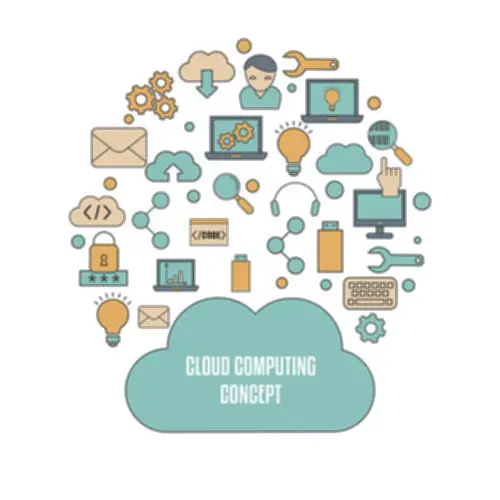All cloud migrations begin with understanding your present IT portfolio, including functions, workloads, and information. Replatforming—or raise, tinker, shift—is a middle-ground method between rehosting and refactoring. Here, you make some optimizations to the application to take advantage of cloud capabilities but not as extensively as in refactoring.

If an IaaS supplier is constructing your cloud resolution, a significant amount of cloud expertise is needed to verify the infrastructure is getting used wisely. If you don’t have and can’t hire group members who are experts in infrastructure design, you’ll likely need to go for a more managed resolution similar to PaaS or SaaS to minimize problems. Migrating to the cloud can thus considerably simplify and streamline your security measures and remove many potential gaps because of human error or deprecated techniques. Examine this to an on-premises solution, where buying new hardware is the only way to scale and elasticity is just attainable with giant amounts of redundant infrastructure that sits ready for occasions of high load. Cloud-based collaboration tools enable team members to work collectively from diverse places, enhancing productivity and enabling remote work.
Scalability And Efficiency
They provide dashboards, visible diagrams, and utilization analytics to help groups determine potential risks, configuration points, and underutilized assets that can be decommissioned or retired. Profitable migration and ongoing management require expert professionals conversant in https://www.globalcloudteam.com/ cloud technologies and safety best practices. Cloud Volumes ONTAP ensures high availability by providing computerized failover and seamless catastrophe recovery, ensuring that data is at all times accessible, even in the event of hardware failure. Refactoring refers to reusing the applying code and frameworks whereas adapting it to run extra efficiently on a Platform as a Service (PaaS). This technique optimizes the applying for the cloud, usually by leveraging cloud-native options while preserving a lot of the current codebase intact.

In broad phrases, cloud migration is a classification based on the sources being moved and the location they’re being moved to. The various kinds of cloud migration embody data middle migration, hybrid cloud migration, cloud-to-cloud migration and workflow migrations (application, database and mainframe migration). Even with the lengthy listing of potential benefits, some functions may not be candidates for the rigors or threat of a cloud migration. For instance, it may be tougher or riskier to move business-critical applications, high-throughput applications that require low latency, or applications that have strict information residency requirements. The risks of cloud migration are fairly properly understood, nonetheless, and don’t have to be deal breakers for many workloads.
Broadly, the cloud plays a central function in most digital transformation initiatives. Big data analytics is one other lure of cloud platforms, providing computing resources and scale unattainable with most on-premises techniques. And, as enterprises broaden their use of cloud-native technologies, they search more commonplace, template-driven processes rather than counting on assumptions and a small group of builders and architects. With this, the organization uploads its native knowledge onto an equipment and physically ships it to a public cloud provider, which then uploads the info to the cloud. Easy rehosting won’t take long, nevertheless it brings downtime and the need to validate the migrated workload and troubleshoot problems. Have a rollback plan in place and ensure workers is out there to troubleshoot post-migration.
Companies that tackle cloud migration at the particular person workload degree could make cogent decisions about cloud use in methods which might be the most useful to the group. A cloud migration that fails for one workload does not preclude profitable cloud data migration cloud deployments for numerous different workloads. DiscoverUse software program monitoring and administration tools that help you get a transparent picture of your data and software infrastructure and its dependencies and insurance policies. You solely pay for the cloud assets you use, which makes it easier to scale up or down primarily based on business calls for. Moreover, the cloud presents quite so much of pricing fashions, together with significant free tiers, so your company can choose probably the most cost-effective choice in your wants.
- Once the migration is complete, companies monitor cloud-based systems to make sure they are functioning as expected.
- This is done by analyzing the person advantages, dangers, cost and potential dependency issues of shifting every digital asset to the cloud.
- On the flipside, the extra data and workflows you transfer directly, the greater the probabilities are that something will go mistaken.
Cloud Migration Steps For A Easy Transition
Conversely, deciding on the right technique positions a enterprise for long-term operational success and growth. Strategies differ not just in complexity and scope but additionally within the level of disruption they introduce to present processes. One widespread model is to switch information and applications from an on-premises data heart to the public cloud. Another mannequin entails shifting knowledge and functions from one cloud platform or provider to a different in what’s generally recognized as cloud-to-cloud (C2C) migration. A third type of migration is reverse cloud migration, additionally called cloud repatriation or cloud exit, where knowledge or purposes are moved off the cloud and again to a neighborhood data heart.
Telemedicine platforms hosted on the cloud scale effortlessly to satisfy fluctuating patient demand. Data migration includes transferring data from one system or environment to another. Knowledge integration merges and synchronises knowledge from multiple linked sources into a unified view. Your plan is executed by performing the data migration, where the data is extracted and transferred to the new system. Cloud-based collaboration instruments and productiveness suites enable seamless communication, collaboration, and remote work capabilities. Employees can entry shared paperwork, communicate in real-time, and collaborate on initiatives from wherever with an internet connection, selling productivity and adaptability.
Physical shipment won’t get rid of the necessity for additional syncing, however it could possibly cut the time and expense of shifting the data. It can be prudent to gauge migration options with an eye fixed toward an utility’s future capabilities. For example, a enterprise that plans to ultimately use hybrid or multi-cloud capabilities might be higher off including them in its present AI Robotics migration planning. Map your corporation processes to the new applicationBefore you migrate, understand your current enterprise processes associated to the know-how you intend to move.

A strategic method tailored to the organization’s specific wants will assist maximize the long-term advantages of cloud adoption. Most large, public cloud suppliers supply devoted instruments for cloud-to-cloud migration and centralized management. There are also third-party instruments that specialize in the method, corresponding to Cisco’s AppDynamics. A key problem is the high complexity of shifting workloads from an on-premises knowledge middle to a cloud provider’s knowledge center, particularly understanding all the dependencies and addressing data security considerations. Community latency points for high-throughput operations and information residency concerns could be additional obstacles.
Though cloud suppliers provide sturdy safety, organizations stay liable for protecting their data and applications. Cloud environments introduce new safety paradigms, and misconfiguration can expose information to breaches or compliance violations. This migration can contain quite a lot of activities, including transferring information storage, servers, functions, and even complete IT infrastructures to the cloud. It is an important step for businesses seeking to modernize their IT techniques and take full benefit of the cloud’s advantages, similar to real-time processing, improved scalability, and on-demand resources. It offers hardware virtualization and emulation options throughout the globe for legacy hardware like Sun SPARC, PA-RISC, PDP-11, Alpha Servers, DEC VAX, and more. Its Charon emulation answer uses the raise and shift migration process on a brand new modern platform like x86 servers or cloud platform with out altering codes.
